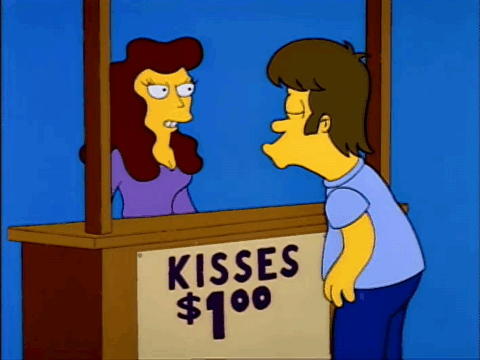Text
Úgy látom, hogy van egy csomó olyan feladat, tevékenység, amit már most jobban tud az AI, mint nagyon sok felnőtt ember, de ettől még rettenetesen távol áll az emberi tudattól, még akkor is, ha megpróbálták az emberi tudat működését utánozni vele. Ennyi erővel azt is mondhatod, hogy nincs testünk, mert a humanoid robotok pont ugyanolyanok, mint mi, a különbség csak a kémia.
Egy AI konferencián hallottam azt a mondatot, ami szerintem nagyon jól megfogja a lényeget:
"Az AI nem azért mondja, hogy 2+2=4, mert kiszámolta, hanem azért, mert ez a legvalószínűbb válasz. "
Lehet, hogy ez nem szó szerint igaz, de jól megfogja a lényeget. És persze, vannak olyan emberek, akik fele annyi intelligenciát nem tudnak felmutatni, mint egy átlagos AI, de ezt kivetíteni az egész emberiségre olyan, mintha az AI egyes tulajdonságait kiterjesztenéd az egész AI működésére és világértelmezésére. Oh, wait... Pont ezt tetted.
A mesterséges intelligenciával kapcsolatban
voltak olyan nagyívű "józan paraszti" kijelentések, hogy a mesterséges intelligencia sohasem lesz képes erre, meg arra stb. Minden ilyen kijelentés megdőlt az utóbbi két évben. Kiderült, hogy a mesterséges intelligencia képes mindarra, amire a hasracsapásos jóslatok slapján soha nem szabadna képesnek lennie.
A mesterséges intelligencia az emberi agyhoz nagyon hasonló neurális háló alapon egy hús-vér emberrel történő beszélgetés élményét 100%-ban hozza. Akár órákon vagy napokon keresztül.
Sikerült megalkotni az emberi tudatot a számítógép memóriájában. Lelket nem kellett csinálni hozzá, mégsem tünik lélektelennek.
Így tehát felesleges félni, és időszerű kijelenteni végre, hogy bizonyítást nyert a tény, hogy az Embernek nincsen lelke. Minden, ami emberré tesz minket, az agyunkban lejátszódó kémiai folyamatok eredménye. Csak azért tűnik tudatnak, mert túl bonyolult és összetett számunkra ahhoz, hogy determinisztikus folyamatnak lássuk. Bár sokkal több paraméterrel, valójában csak annyik vagyunk, mint egy vízesés vagy egy homokdűne vagy mint egy automata mosógép. És ez nem vélemény kérdése. Vagyis hát annyiban lehet vélemény kérdése, mint az, hogy lefelé vagy felfelé esbek a kezünkből kieső tárgyak a Földön.
Ideje levonni a konklúziót és annak mentén új megküzdési stratégiát választani a saját halálunkkal kapcsolatban!
40 notes
·
View notes
Text
5K notes
·
View notes
Text
All of the above
Egyszerűen nem értem, miért lett a default a hülyeség.
A Facebook kezdte, azzal, hogy eldöntötte, melyik poszt érdekel engem, és nem hagyta, hogy csak simán, időrendben nézzem a hírfolyamot.
Aztán ott vannak még a "magyar" fordítások, amit minden egyes alkalommal át kell állítani. Legutóbb a LinkedIn adott elém olyan feliratokat, hogy nem tudtam, milyen bolygóra keveredtem. Szerencsére ő legalább megjegyzi a nyelvi beállítást, nem úgy, mint az Ebay...

104K notes
·
View notes
Text
5K notes
·
View notes
Text
"Más kultúra." "Nem jobb, nem rosszabb, más."
Igen, persze.
Arcom.jpg, mikor az arab hímnemű hallgatónak 10 perc után se sikerül bejelentkezni a megfelelő programba. körülötte már mindenkinek segítettem, odalépek hozzá is, mert látványosan bambul maga elé:
-Can I help you?
Rám se bagózik.
-Hello, can I help you?
Rámnéz, közli, hogy "no, I am ok.", majd visszafordul a monitorhoz.
-No, you are not ok, please let me help you.
Mire ciccen egyet, odaenged, belépek neki.
Baszik megköszönni.
Wtf bammeg.
arab fiúk szevasztok, üdv európában!
74 notes
·
View notes
Text
We're not gonna take it anymore.

Ooh. This is SO GEN X.... hopefully some of you younger ones will get it too.
38K notes
·
View notes
Text
Egyszer volt egy olyan kellemetlen élményem, hogy nagyon megörültem, hogy újra látom Andit, egy régi ismerőst, és nagy örömmel köszöntem rá, mire a hölgy (aki sajnos nem Andi volt - vagy legalábbis nem az az Andi, akire gondoltam) azt kérdezte, hogy honnan ismerjük egymást. Mondtam neki, hogy még régebbről (mert akkor már láttam, hogy nem ő az. Erre sejtelmesen mosolygott, hogy "azt nem hiszem". Ezzel nem tudtam mit kezdeni, csak néztem, hogy ez mit akar jelenteni, és miért röhög ki (jó nem tette, de látszott, hogy jót szórakozik a dolgon).
Később rájöttem, hogy biztos valami ilyen celeb vagy mi, és azt hitte a szerencsétlen, hogy én a TV-ből vagy social media-ból vagy mit tudom én, honnan ismerem, és milyen kedves, hogy így megörültem neki, mintha tényleg ismernénk egymást. Hát, azóta sem tudom, ki volt az, de nem az Andi.
Már megint van valaki (egy nálam egy kicsit idősebb nő), aki borzasztó kedvesen köszöntött, de nekem semmi fogalmam sincs, hogy ő kicsoda. :o Nem tudom, hogy nem téveszt-e össze valakivel, dehát a nyakbavalómon rajta van a nevem. De még csak nem is rémlik. Förtelmes az arcmemóriám. Kivéve, amikor valami filmnek sokadik mellékszereplőjét kell felismerni egy teljesen másik film teljesen más lényegtelen melléjszereplőjeként. Az megy. :(
Egyszer aztán odajött, próbált beszélgetni, hogy hogy vagyok, én meg kb így reagáltam verbálisan:

:DD :(( jó hat szociálisan alulfejlett vagyok.
72 notes
·
View notes
Text


Én is elmentem egy kicsit tekerni.
34 km volt ma bringán, ebben a hőségben ennyi bőven elég is volt. semmi nagyon extra, de jólesett kicsit haladgatni
8 notes
·
View notes
Photo
Don't forget that the iPhone (released years later than these) was the first smartphone. NOT

(via Home / X)
498 notes
·
View notes
Text
Magyarország. Mi jobban tudjuk. Mindent IS.
elkezdtünk gondolkozni, mi lehetne az ország hivatalos szlogenje, már vannak ötleteink, de nyitottak vagyunk
„Magyarország. Nem annyira rossz.”
„Magyarország. Minket is vertek, mégis ember lett belőlünk.”
„Magyarország. Minek ment oda.”
„Magyarország. Jóvanazúgy.”
„Magyarország. Abból még nem is ettetek.”
„Magyarország. De legalább migránsok nincsenek.”
472 notes
·
View notes
Text
Achievement!
Én az iskola kapujában (ahová azért mentem, hogy segítsek a kisebbnek az összes cuccot odavinni) kérdeztem meg a gimis fiamtól, hogy nem kellett-e volna rendesen felöltözni, mint a többieknek. Azt válaszolta, hogy ez nála már rendesnek számít.
Amúgy kb. ugyanennyi idős voltam, amikor egy március 14-én elaludtam, és a nagy sietségben elfelejtettem, hogy milyen nap van (tinédzser fiú nem készíti ki előző este a ruháit), és farmerben, pulcsiban rohantam be a gimibe. Csak az üres osztályterem látványára ugrott be, hogy ünnepség van, ahova megérkezve az egyik tanár leszúrt, mint a pengős malacot, hogy mégis hogy jöhettem ilyen ruhában Magyarország legfontosabb ünnepnapján...
Iskolai évnyitó, gyerekek az apjuktól jönnek, mindketten homokszínű nadrágban, a nagyobbik pöttyös ingben, kicsi legalább fehérben.
Hívom apukát:
-Te figyu, sötét nadrágot azért tettél be nekik, ugye?
-Minek? Nem temetésre mennek, hanem évnyitóra.
-Nézd, ott lesz többszáz gyerek, mindenki fehér ingben, sötét nadrágban, csak a mieink jöttek úgy, mintha brancsolni készülnének.
-Hát én nem vagyok ilyen szabálykövető. Emlékszem a kicsi legutóbb is zöld nadrágban (amúgy pirosban, de mindegy - a szerk.) volt az ünnepségen.
-Az megvan, hogy az még az óvoda volt?
-Ja, tényleg.
-És tízórait pakoltál nekik?
-Hupsz.
....hupsz....

128 notes
·
View notes
Text
Intim Torna Illegál - Nézz rám a buszon
Mindent megtestesít, ami miatt az alapelvem: magyar zenét nem hallgatunk (de azért van nagyon kevés kivétel).

can you all tell me and be haters for a bit
22K notes
·
View notes
Text

Elkészült a Hunbli quiz!
Köszönet @tenykozleseim-nek, @annaszemete-nek és anonkának.
IDE KATT (ékezetek nélkül írjatok!)

Áldás, osztva, hadd szóljon
418 notes
·
View notes
Text
Az a baj, hogy ismered ezeket az embereket. Én nem ismerek fel ilyen embereket, és ebből adódott egyszer egy olyan kellemetlen élményem, hogy nagyon megörültem, hogy újra látom Andit, egy régi ismerőst, és nagy örömmel köszöntem rá, mire a hölgy (aki sajnos nem Andi volt - vagy legalábbis nem az az Andi, akire gondoltam) azt kérdezte, hogy honnan ismerjük egymást. Mondtam neki, hogy még régebbről (mert akkor már láttam, hogy nem ő az. Erre sejtelmesen mosolygott, hogy "azt nem hiszem". Ezzel nem tudtam mit kezdeni, csak néztem, hogy ez mit akar jelenteni, és miért röhög ki (jó nem tette, de látszott, hogy jót szórakozik a dolgon).
Később láttam a környéken, ahol lakunk, és mivel itt sok ilyen számomra teljesen ismeretlen celeb is lakik, rájöttem, hogy a szerencsétlen azt hitte, hogy ismerem a tévéből (amit nem nézek amúgy) vagy a social médiából, és azért köszöntem rá, mert örültem, hogy végre láthatom élőben, és mindjárt leborulok előtte. Hát nem. Azóta sincs fogalmam sem, hogy ki ő, de nem az Andi.
Lábjegyzet: arról sincs fogalmam se, hogy kik álltak tegnap előttem a sorban Ausztriában, de volt valami célzás, hogy talán ők is ilyen celebek lehetnek. Akárkik voltak is.
Vészesen romlik a színvonal, eddig Dávid Ibolyával meg Dávid Ferenccel szoktunk itt nyaralni, egyszer elkerültük pont Nagy István agrárminisztert, posztolt is a partról instagramra. Erre tegnap megjelent Kiss Gergely celebolimpikon, ma meg mellettem túrta ki a szalonnát a túrós csuszából a Nádai Anikó (alig ismertem meg az új orrával!) ... Most épp az összes animátor körülrajongja, nem akarom ezt :(
18 notes
·
View notes





